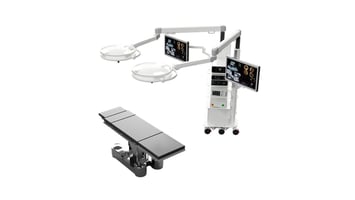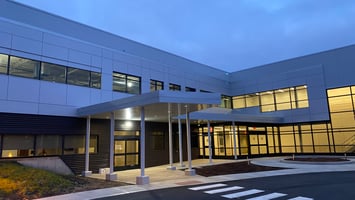In modern surgical suites, patient safety and staff well-being are crucial. Yet, one...
Advances in Cardiac Surgery in the Outpatient Setting
The field of cardiac surgery has witnessed remarkable advancements in recent years, particularly in the outpatient setting. Innovative approaches to cardiac surgery enable patients to undergo procedures, such as diagnostic cardiac catheterization, angioplasty, and pacemaker implantation, without the need for overnight hospital stays, resulting in reduced costs, enhanced patient satisfaction, and quicker recovery times. Hardaway|Sziabowski has designed several cardiac ASC's in recent years and the demand appears to be rising.
One of the key breakthroughs in outpatient cardiac surgery is the utilization of minimally invasive techniques. Traditional open-heart surgeries often require large incisions and prolonged hospital stays. However, with minimally invasive procedures, surgeons can now perform intricate operations through small incisions, resulting in less trauma to the body and a faster healing process. Patients can resume their daily activities earlier and experience less post-operative pain. Recovery within the ASC relies on a combination of standard and private stations, often including both Phase I and Phase II recovery options, and should be tailored to the specific needs of the facility.
Another significant development in outpatient cardiac surgery is the incorporation of advanced technology. For instance, the integration of fixed imaging systems and surgical robots in the operating room has revolutionized the field, empowering surgeons to perform complex surgeries with enhanced precision and control, significantly reducing the risk of complications and improving patient outcomes. Planning the outpatient cardiac OR requires understanding the unique requirements of the specialized equipment stationed in and around the OR as well as careful coordination of the infrastructure to support the equipment.
Advances in anesthesia and pain management techniques have also contributed to the rise of cardiac procedures in the ambulatory setting. Anesthesia protocols have become more tailored and individualized, ensuring patient comfort and safety throughout the procedure. The use of regional anesthesia and nerve blocks has also become more prevalent, effectively managing pain and minimizing the need for strong pain medications post-surgery. Areas for preparation and administering of anesthesia need to be discussed during design to assure the correct accommodations are made. Since there is more track mounted and fixed equipment in this type of OR compared with that of the traditional ASC, the addition of medical gas and other booms are often necessary to assure ready availability of these services to the surgical team.
These advancements and more are transforming the realm of cardiac care, providing patients with safe, efficient, and effective approaches to cardiac surgery. With minimally invasive techniques, advanced technology, improved anesthesia protocols, and dedicated outpatient surgery centers, cardiac surgery is becoming more accessible and beneficial for patients. These breakthroughs continue to push the boundaries of what is possible in the outpatient setting, ultimately enhancing the lives of countless individuals with cardiac conditions.




